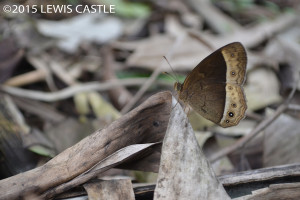 Whenever you set foot outside, whether it’s day or night, you are bound to see an insect of some description. Look hard, you might just see something cool, look even harder and you will probably see something spectacular.
Whenever you set foot outside, whether it’s day or night, you are bound to see an insect of some description. Look hard, you might just see something cool, look even harder and you will probably see something spectacular.
When I’m not on shift, you can find me in the forest finding out what’s new. It seems now that every time I do, I find something just as odd, or even more so than I did the last time. With the help of Michael, my partner in crime, we have collectively managed to compile a moderately sized archive of all the weird and wonderful creepy crawlies West Java has to offer. Now there are far too many to fit in just one blog, so here’s a few of my favourite findings:
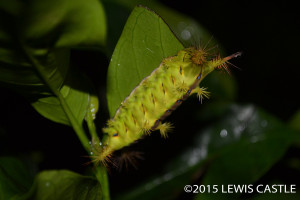
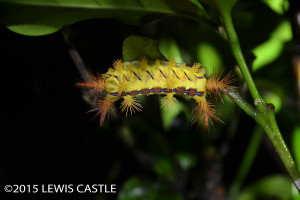 Here we have the coconut nettle caterpillar (Setora nitens). Michael and I found these critters underneath the leaves of a coffee plantation, and they come in the most amazing colours. Being a marine biologist, the closest I got to identifying this was a nudibranch (sea slug). They are equally as colourful, and most likely equally as poisonous.
Here we have the coconut nettle caterpillar (Setora nitens). Michael and I found these critters underneath the leaves of a coffee plantation, and they come in the most amazing colours. Being a marine biologist, the closest I got to identifying this was a nudibranch (sea slug). They are equally as colourful, and most likely equally as poisonous.
I’m not 100% sure about this one, but I’ve rooted around and had a stab at what I think it may be, a Leaf False Katydid. They’re pretty common; it’s almost difficult not to see one, even though they are conspicuously shaped like a leaf. This little feller (lower left), however, couldn’t have been any less camouflaged if he tried. I can only describe the colouration as the orange you would find in a carton of Sunny D. Still a pretty cool find.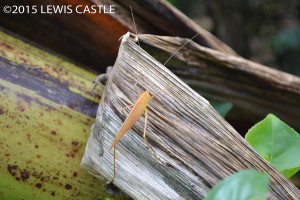
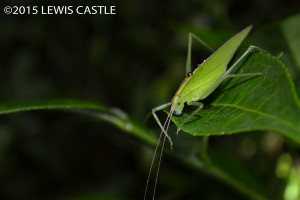
Some of the hardest insects for me to photograph here have been the butterflies. Just when you think they have landed for a rest long enough to snap, off they go again. Here I was lucky enough to capture this beautiful courtship on camera after begging my way in to someone’s garden for a close enough view. These are Great Mormon butterflies (Papilio polytes), above we have the female and below is the male. Shortly after taking this photo they flew off again, and when I say they, I mean the female flew off and carried the male underneath her.
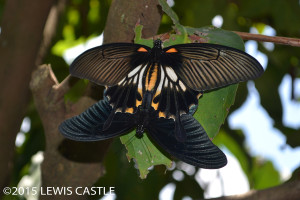
Next up we have an individual in a group of over two and a half thousand species. This is a spotted tiger beetle, I couldn’t get the species name, but can you honestly blame me? Tiger beetles are adapted to sprinting to catch their prey. You can’t see it in this photo, but their front consists of a powerful set of mandibles that I wouldn’t want to get my fingers trapped in. Supposedly these beetles, this one being roughly 3.5cm in size, can reach speeds of up to 9km/hr. To scale this up for you, imagine running over 500 times your own body length per second. Not hard to believe when their feet look like a pair of Nike Pros.
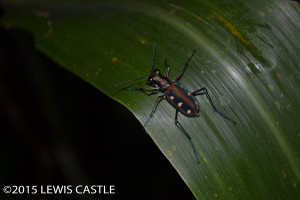 Last up, we have a species of weevil closest identified as a Cyrtotrachelus sp. I’m not sure about the common name as these vary depending on the website you use. Some identify them as palm weevils whilst others identify them as bamboo weevils. I just don’t know. We managed to whittle this one down by its size (~40mm) and pattern on its back. They can also sometimes be identified based on their diet.
Last up, we have a species of weevil closest identified as a Cyrtotrachelus sp. I’m not sure about the common name as these vary depending on the website you use. Some identify them as palm weevils whilst others identify them as bamboo weevils. I just don’t know. We managed to whittle this one down by its size (~40mm) and pattern on its back. They can also sometimes be identified based on their diet.
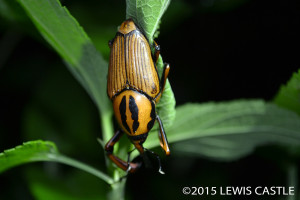 From stick insects, to spiders, praying mantis and butterflies – I’ve probably only scratched the surface of all the insects West Java has to offer. I would encourage everyone and anyone to get up, get out and explore, wherever you may be. Doing so here has really opened my eyes to the diversity of life you can find just a few footsteps from your house. And who knows, you might just surprise yourself or even inspire another to take an interest in the insects, hey Michael?
From stick insects, to spiders, praying mantis and butterflies – I’ve probably only scratched the surface of all the insects West Java has to offer. I would encourage everyone and anyone to get up, get out and explore, wherever you may be. Doing so here has really opened my eyes to the diversity of life you can find just a few footsteps from your house. And who knows, you might just surprise yourself or even inspire another to take an interest in the insects, hey Michael?
Lewis Castle – Research Assistant
click here to see our most recent paper about arthropods living at our field site!
